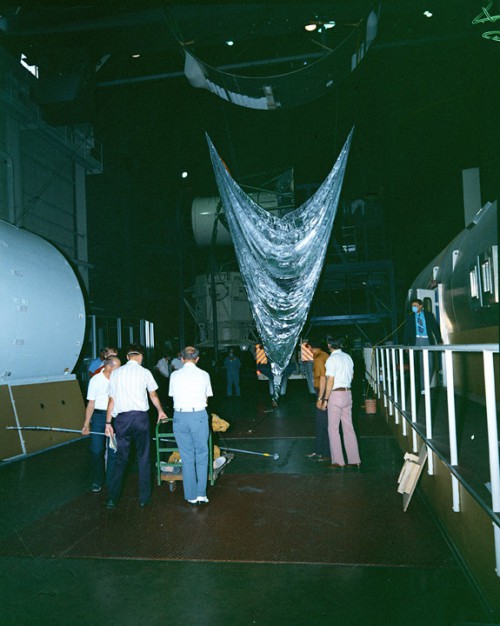I have a couple of aviation friends who retired this week from NASA and the space program. When I’ve talked to NASA acquaintances over the years, they all credited their inspiration to the MacGyver types who helped put a man on the moon a decade after the country decided to try it. Think about that. These days, we can’t name a post office in under 20 years.
There’s been a brain drain in the non-commercial space program since we decided to leave manned spaceflight to other countries, and an ongoing debate about whether it suits our planetary needs anymore, but there’s no question that there’s still inspiration in the “best and brightest” who figured out solutions where no man has gone before.
Jack Kinzler has died, the New York Times reports today.
His finest hour was when the Skylab space station was launched, and then lost its heat shield and solar array shortly before astronauts were to occupy it. It was, basically, a ghost ship.
He learned a lot, he said, from building model airplanes as a kid and got to thinking that a home-brew parasol might fix the problem:
He phoned a sporting-goods store and ordered a set of fiberglass fishing rods. The salient thing about them was not that they caught fish, but that they telescoped.
To build his prototype, Mr. Kinzler arranged four rods like the ribs of an immense umbrella, securing one to each side of a piece of parachute silk roughly 24 feet square. Folded, the parasol would just fit into the airlock. Once extruded, its canopy could be snapped open by means of springs.
Normally, Mr. Kinzler said in interviews, the design, building and approval of such novel equipment might take NASA six months. His parasol was ready in six days — six days in which he and his staff of more than 100 lived, worked and slept in the Johnson Space Center.
It worked. Not bad for a guy without a fancy college degree.

“I probably got a little bit of sleep,” astronaut Rusty Schweickar later recalled about the effort, “but most of the team who worked with me at Huntsville never slept for four days! It was totally round-the-clock and it was not just the resources of the center; it was all of the resources of the whole aerospace industry. Anything that we wanted, you simply called somebody and they turned inside out. Three different suppliers would manufacture some thermal material or some device overnight. They would work on it 24 hours themselves. It would be there on the company’s private Learjet the next morning. It was unbelievable how hard people worked.”
He’s also the guy who figured out how to plant a flag on the moon. His inspiration for a flagstaff came from watching his mother hung curtains.
When Apollo astronauts played golf on the moon, Mr. Kinzler is the one who figure out how to sneak the golf clubs on the ship in the first place.
Mr. Kinzler is gone now. The manned space program is stalled. But the flagstaff inspired by Mr. Kinzler’s mom and his own genius still “flies” on the moon.
